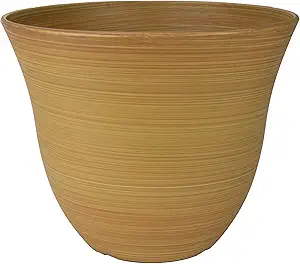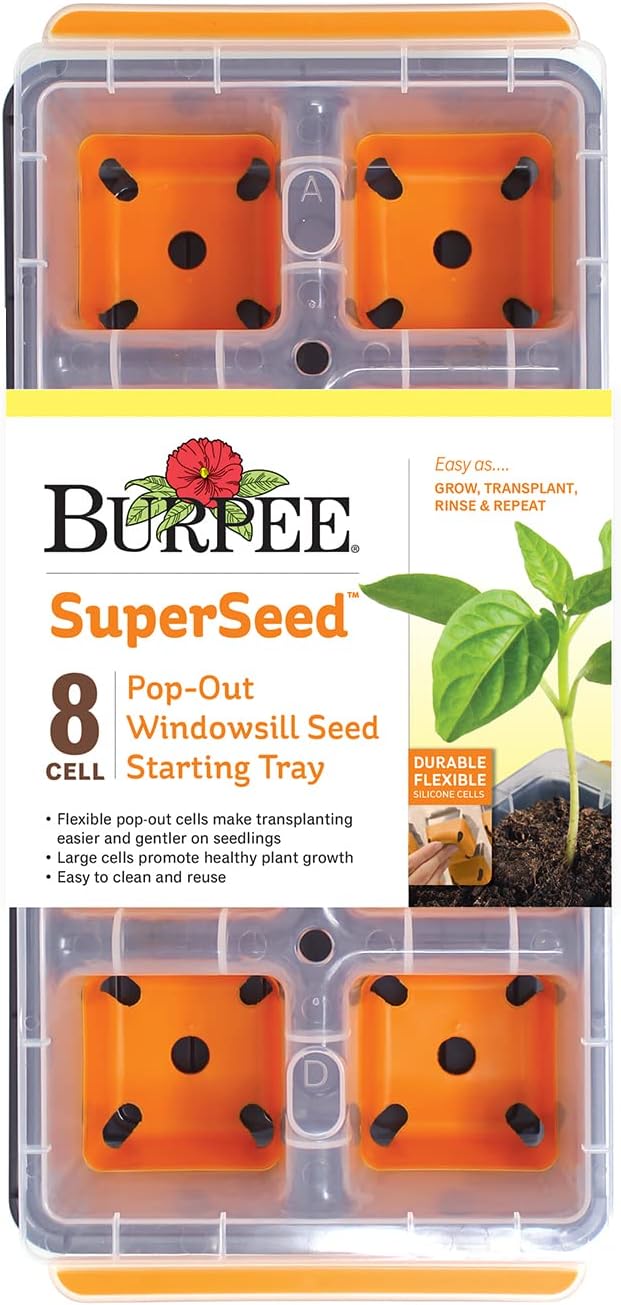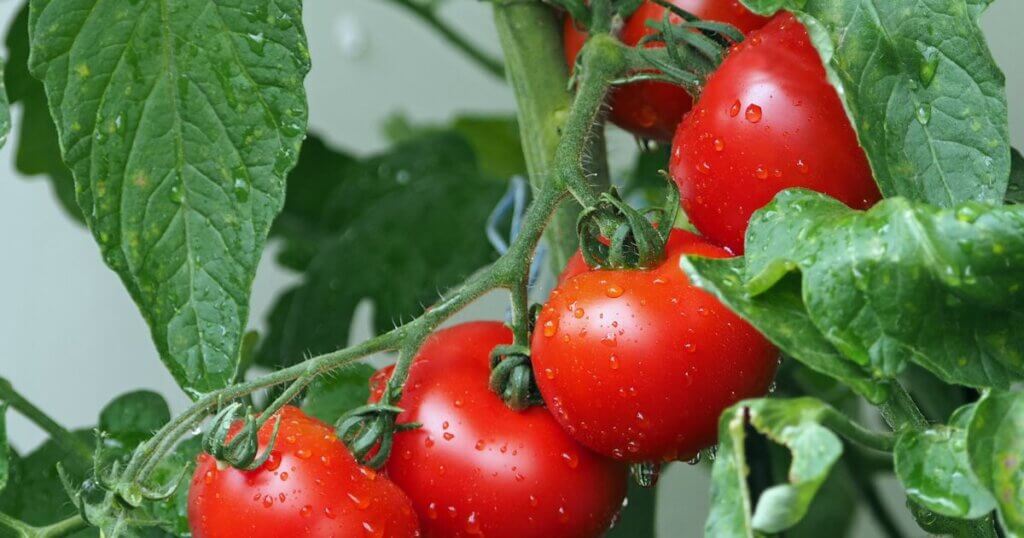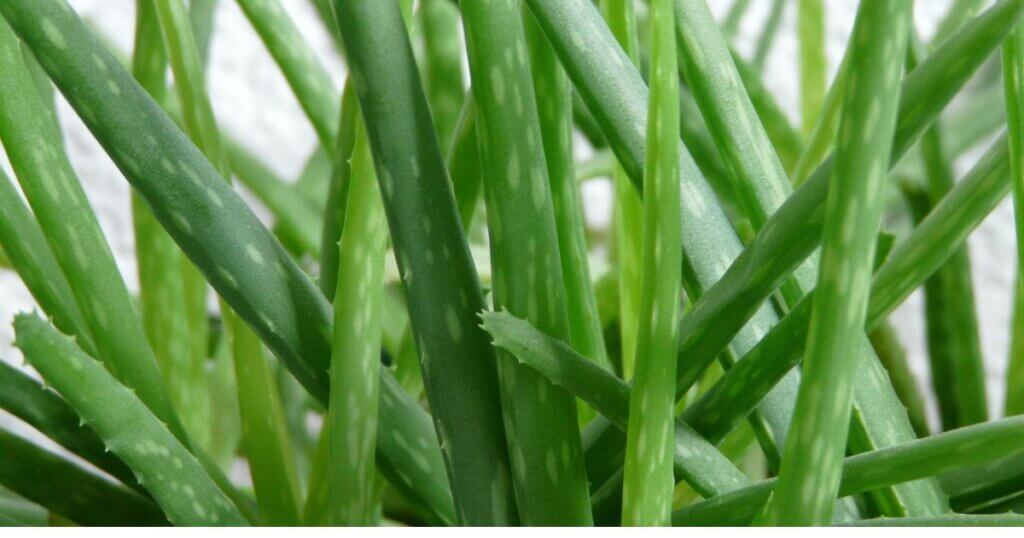How to Grow Kale Indoors: Your Ultimate Guide to fresh greens

Some of the links in this post are affiliate links. As an Amazon Associate, we earn a referral fee from qualifying purchases—at no extra cost to you.
Table of Contents
Kale is a versatile and nutrient-dense superfood that can be a great addition to your home garden. Whether you are a seasoned gardener or a complete beginner, growing kale indoors can be a rewarding and convenient way to ensure you always have fresh greens at your fingertips.
Benefits of Growing Kale Indoors
- Fresh Greens Year-Round
Growing kale indoors ensures you have a continuous supply of fresh greens throughout the year, regardless of the outdoor weather conditions. - Control Over Growing Conditions
Indoor gardening allows you to have full control over factors like temperature, humidity, and light, ensuring optimal conditions for kale growth. - Pesticide-Free Produce
By growing kale indoors, you can avoid harmful chemicals and enjoy pesticide-free, organic produce right at home. - Convenience
Growing kale indoors provides the ultimate convenience, allowing you to harvest fresh leaves whenever you need them without leaving the house.
Choosing the Right Variety of Kale
1. Dwarf Blue Curled Kale
Dwarf Blue Curled kale is a compact, ornamental variety perfect for growing indoors. It features ruffled, blue-green leaves that add a beautiful touch to your indoor garden. This variety grows to about 12–18 inches tall, making it an ideal choice for smaller spaces or containers. Despite its small size, it’s packed with nutrients and flavor, making it a great option for both culinary and decorative purposes.
2. Red Russian Kale
Red Russian kale is a cold-hardy variety that thrives in cool indoor environments, making it perfect for year-round cultivation. Its dark green, tender leaves are tinged with a hint of purple or red, adding color and beauty to your indoor garden. The leaves are slightly sweeter and milder than other kale varieties, making them a favorite for salads and smoothies. This variety grows quickly, so you can expect a steady harvest in just a few weeks after planting.
3. Lacinato (Dinosaur Kale)
Lacinato kale, often known as Dinosaur Kale due to its textured, dark green leaves, is highly nutritious and delicious. This variety has a unique appearance with long, narrow leaves that are slightly tougher than other types of kale, but they become tender when cooked. Lacinato kale thrives indoors with proper lighting and can tolerate a range of temperatures, making it versatile for indoor gardening. It’s great for sautéing, soups, and smoothies, and is packed with vitamins A, C, and K.
4. Siberian Kale
Siberian kale is known for its cold tolerance, making it an excellent choice for growing in cooler indoor temperatures. Its flat, wide leaves are a light green color and have a mild, sweet flavor that’s less bitter than other kale varieties. This variety is particularly hardy and can be grown in a variety of indoor conditions, even in areas with lower light levels. Siberian kale is perfect for making kale chips, adding to soups, or simply enjoying fresh salads.
Selecting the Perfect Location
1. Light Requirements
Kale thrives in bright, direct light, so it’s important to place your indoor kale plants near a south-facing window if possible. If you don’t have sufficient natural light, consider using full-spectrum grow lights to mimic sunlight and provide the 6-8 hours of light that kale needs daily. Positioning the grow lights 6 to 12 inches above the plant can help ensure that the kale gets the energy it needs to grow strong and healthy. Keep in mind that kale may stretch toward the light source, so rotating the pots regularly can prevent uneven growth and encourage even leaf development.
If you don’t have enough natural sunlight, using a grow light like the GE BR30 Full Spectrum LED Grow Light can help ensure your kale gets the 6-8 hours of light it needs daily. It’s energy-efficient, easy to install in standard light fixtures, and perfectly mimics natural sunlight to promote healthy indoor plant growth.
2. Temperature and Humidity
Kale prefers cooler temperatures, ideally between 55°F and 75°F (13°C to 24°C), which is one of the reasons it’s so well-suited to indoor gardening. Excessively hot indoor environments can cause kale to bolt or become bitter, so it’s essential to maintain a moderate room temperature. Humidity also plays a role in kale’s growth—ideal humidity levels are around 40-60%, which is comfortable for both the plant and most indoor environments. If your home is dry, especially in winter, consider using a humidity tray or a small humidifier to maintain a healthy moisture level around your kale.
Maintaining ideal humidity is key for indoor kale. A device like the LEVOIT 2.5L Cool Mist Humidifier helps keep humidity around 40–60%, preventing your kale from drying out, especially during winter months. It’s quiet, efficient, and perfect for plant rooms.
3. Space Considerations
While kale isn’t particularly large, it does need enough space for its roots and leaves to grow. Opt for containers that are at least 8-12 inches deep to allow the plant’s roots to develop properly and avoid overcrowding. Kale plants can grow up to 18-24 inches tall, so providing enough vertical space is just as important as horizontal space for healthy growth. If you plan to grow multiple kale plants, make sure to leave about 6-8 inches of space between each one to prevent overcrowding, which can lead to poor air circulation and increased susceptibility to disease.
Soil and Container Selection
Best Soil Mix for Indoor Kale
- Kale thrives in well-draining soil that is rich in organic matter. A high-quality soil mix with compost will help provide the nutrients needed for healthy growth.
- You can create your soil blend by combining equal parts of potting soil, perlite, and organic compost. This combination ensures proper aeration and moisture retention.
- Avoid using heavy, clay-based soil as it can become compacted and prevent roots from receiving enough oxygen, leading to poor plant growth.
- It’s also beneficial to include a balanced fertilizer in the soil mix to support kale’s nutrient needs, especially during the plant’s growing and flowering stages.
Choosing the Right Container
- When selecting a container for your indoor kale, choose one that’s at least 8-10 inches deep to accommodate the plant’s root system. A deeper container allows for better root development.
- The container should be wide enough to allow the kale to grow and spread its leaves. A pot with a diameter of around 12 inches is ideal for one or two plants.
- Make sure the container material is suitable for indoor use. Plastic or ceramic pots are commonly used, but ensure the pot is light enough to move easily if needed.
- Consider the aesthetic of the container as well. Choosing a container that complements your indoor decor can add to the visual appeal of your indoor garden.
Proper Drainage for Containers
- One of the most important factors in growing kale indoors is ensuring proper drainage in the container to prevent waterlogging, which can cause root rot.
- Look for containers with drainage holes at the bottom. This allows excess water to escape and prevents the soil from becoming overly saturated.
- You can also add a layer of small stones or gravel at the bottom of the pot before adding the soil mix to improve drainage and ensure that water flows freely.
- If you’re using a decorative container without drainage holes, consider using an inner pot with holes or create your drainage system to avoid the risk of overwatering your kale.
“Choosing the right pot with good drainage is essential. The Classic Home and Garden Honeysuckle Planter, 13”, is a lightweight, durable option with built-in drainage holes, making it perfect for growing healthy indoor kale while adding style to your home decor.”
Planting Kale Seeds Indoors
1. Starting from Seeds vs. Seedlings
Growing kale from seeds offers the opportunity to choose from a wide variety of kale types, allowing you to experiment with different flavors and textures. Seeds are also cost-effective and can be stored for long periods, making them a great option for gardeners on a budget. However, starting from seeds requires patience and attention to detail, especially during the germination process. Alternatively, buying seedlings can speed up the growing process, as they are already partially developed and ready to be transplanted into your indoor garden.
2. Germination Process
The germination process is crucial for starting kale from seeds, and it requires the right conditions to succeed. Typically, kale seeds need a warm environment (around 65°F to 75°F or 18°C to 24°C) and consistent moisture to sprout. You can speed up germination by covering the seed tray with a clear lid or plastic wrap, which helps maintain humidity. Once the seeds begin to sprout, remove the covering to prevent mold growth and ensure the seedlings receive adequate light.
To simplify the germination process, consider using the Burpee Self-Watering Seed Starter Tray. It provides consistent moisture and a greenhouse-like environment, improving your kale seed germination rate and making seed starting easy even for beginners.
3. Seedling Care and Transplanting
After your kale seedlings have grown large enough to handle, it’s time to provide them with proper care to ensure they thrive indoors. Keep the seedlings in a well-lit area with at least 6 hours of direct sunlight or under grow lights for optimal growth. Water them regularly, but be careful not to overwater, as this can lead to root rot. When the seedlings are 4 to 6 inches tall, you can carefully transplant them into larger containers or directly into your indoor garden setup.
Optimal Lighting for Indoor Kale
Natural vs. Artificial Light
Kale, like most leafy greens, thrives on light, and understanding the difference between natural and artificial light is crucial for successful indoor gardening. While natural sunlight is always the best option for plant growth, not every home has enough direct light to support kale. If you’re growing indoors without a south-facing window or during the winter months, artificial lighting becomes essential. You can supplement natural light with grow lights, ensuring your kale gets the right spectrum of light it needs to grow strong and healthy.
Using Grow Lights Effectively
Grow lights can be a game-changer for indoor kale gardening, but using them effectively requires understanding the light spectrum and timing. Full-spectrum LED grow lights are an excellent choice because they mimic natural sunlight and promote healthy plant growth. To get the best results, position the lights close to your kale plants—about 6-12 inches above the leaves—and keep them on for 12-16 hours a day, depending on how much natural light your space receives. Regularly adjust the light height as your plants grow, ensuring that they receive consistent, strong light for optimal development.
Positioning Your Lights
Proper positioning of your grow lights is key to ensuring even growth and preventing your kale from becoming leggy or weak. Ideally, place the lights directly above the plants in a position where the light can spread evenly across the entire growing area. If you’re using multiple lights, ensure that each plant gets an adequate amount of exposure, with no shadows created by nearby objects or other plants. You may also want to use adjustable light stands to easily modify the distance and angle as your kale grows taller.
Feeding and Fertilizing Your Kale
Kale requires nutrient-rich, well-draining soil to thrive, with a particular need for nitrogen to promote leafy growth, as well as phosphorus and potassium for strong roots and overall health. Organic fertilizers like compost or fish emulsion are great options, offering slow nutrient release, while liquid fertilizers can provide faster absorption for quick growth. A balanced fertilizer with slightly higher nitrogen content is ideal, and kale should be fertilized every 4 to 6 weeks to maintain optimal health. However, it’s important not to over-fertilize, as this can lead to excessive growth without improving flavor, so adjusting the schedule based on the plant’s needs is essential.
Managing Pests and Diseases
Common indoor kale pests include aphids, whiteflies, and spider mites, which can damage the plant by feeding on its leaves. Preventing and treating diseases involves ensuring proper air circulation, avoiding over-watering, and removing infected leaves promptly to prevent the spread of mold or mildew. Organic pest control methods, such as neem oil, insecticidal soap, or introducing beneficial insects like ladybugs, can be effective in managing these pests without harming your kale or the environment. Regularly inspecting your plants and maintaining a clean growing area can also help minimize pest problems and keep your kale healthy.
Indoor kale can sometimes attract pests like aphids or spider mites. Using an organic solution like Neem Bliss 100% Cold Pressed Neem Oil is a safe and effective way to protect your plants. It’s completely natural, easy to mix into a spray, and works as both a pesticide and fungicide without harming your kale.
Pruning and Harvesting Kale
To prune kale, it’s best to start once the plant has developed a few leaves, trimming the outer leaves regularly to encourage new growth and prevent overcrowding. Proper harvesting involves cutting the mature leaves from the outside of the plant, leaving the inner leaves to continue growing, which helps maintain a healthy plant. For maximum yield, ensure the plant receives enough light, water, and nutrients, and avoid letting the kale flower, as this can reduce leaf production. Regular pruning and harvesting will keep your indoor kale plant productive, ensuring a constant supply of fresh greens.
Storing and Using Fresh Kale
To store fresh kale, keep it in a plastic bag or airtight container in the refrigerator, where it can stay fresh for up to a week. For creative recipes, kale can be used in salads, soups, smoothies, or even baked into crispy kale chips. If you want to preserve kale for long-term use, consider freezing it after blanching to retain its nutrients and flavor. This way, you’ll have kale available year-round for various dishes, even when fresh kale is out of season.
Troubleshooting Common Problems
Yellowing leaves, stunted growth, and leggy seedlings are common signs of nutrient deficiencies or improper growing conditions in kale. Yellowing leaves may indicate a lack of nitrogen or overwatering, while stunted growth can result from poor light, insufficient nutrients, or overcrowding. Leggy seedlings often occur when kale doesn’t receive enough light, causing them to stretch and become weak. Addressing these issues promptly can help restore healthy growth and improve the overall vitality of your indoor kale.
Benefits of Kale for Health and Nutrition
Nutrient Profile of Kale
Kale is a powerhouse of essential vitamins and minerals, making it one of the healthiest leafy greens. It’s an excellent source of Vitamin K, which plays a crucial role in bone health and blood clotting. Additionally, kale is rich in Vitamin A, which supports immune function and eye health. The high fiber content in kale aids digestion, while the presence of antioxidants like flavonoids and carotenoids helps fight free radicals, contributing to overall wellness.
Health Benefits
Kale is renowned for its numerous health benefits, ranging from boosting the immune system to improving heart health. The high levels of Vitamin C in kale help strengthen the immune system, promoting skin health and collagen production. Kale is also packed with antioxidants that may help reduce inflammation in the body, lowering the risk of chronic diseases like heart disease. Moreover, its fiber content supports digestive health and can help lower cholesterol levels, contributing to a healthier cardiovascular system.
Incorporating Kale into Your Diet
Incorporating kale into your daily diet is easy, and it adds a nutritious boost to almost any meal. You can enjoy kale in smoothies for a refreshing, nutrient-dense start to your day, or add it to soups and stews for a hearty, healthy addition. Another popular way to include kale is by tossing it in salads, either raw or massaged with olive oil for a softer texture. For a quick snack, kale chips are a fun, low-calorie option to satisfy your craving for something crunchy while enjoying the nutritional benefits of this leafy green.
Conclusion
Growing kale indoors is a practical way to enjoy fresh, nutritious greens year-round. With proper care, you can cultivate healthy, pesticide-free kale right at home, reducing grocery store trips and your carbon footprint. This rewarding hobby also offers therapeutic benefits, promoting mindfulness and well-being. Packed with essential vitamins and minerals, homegrown kale boosts your health and can be used in various dishes, making it a valuable addition to your meals.
FAQs – How to grow Kale indoors
1. What’s the best way to water indoor kale—top or bottom watering?
Both methods work, but bottom watering (placing the pot in a tray of water) helps encourage deep root growth and prevents overwatering.
2. Can I regrow kale from store-bought leaves?
While you can try regrowing kale from cut stems in water, growing it from seeds or seedlings is more reliable for a steady harvest.
3. How do I prevent pests like aphids on indoor kale?
Regularly inspect the leaves, rinse off pests with water, and use neem oil or insecticidal soap if needed. Keeping good air circulation helps prevent infestations.
4. Can I continuously harvest kale indoors?
Yes! Use the “cut and come again” method by harvesting the outer leaves first, allowing the plant to keep producing fresh leaves for weeks or months
5. How often should I water my indoor kale plants?
Kale prefers consistently moist soil but avoids overwatering. Typically, watering once or twice a week should suffice, depending on indoor humidity levels and temperature.
Other useful sites related to how to grow kale indoors
- How to Grow Kale Indoors: 11 Steps (with Pictures) – wikiHow
- Growing Kale Indoors – 10 Proven Steps – A Foolproof Guide
- How to Grow Kale Indoors: Harvest Fresh Leaves Without Going Outside
- How To Grow Kale Indoors – Also My Favorite LED Grow Light – Off Grid
- How to Grow Kale Indoors
Some Interesting Growing Kale Indoor Videos









